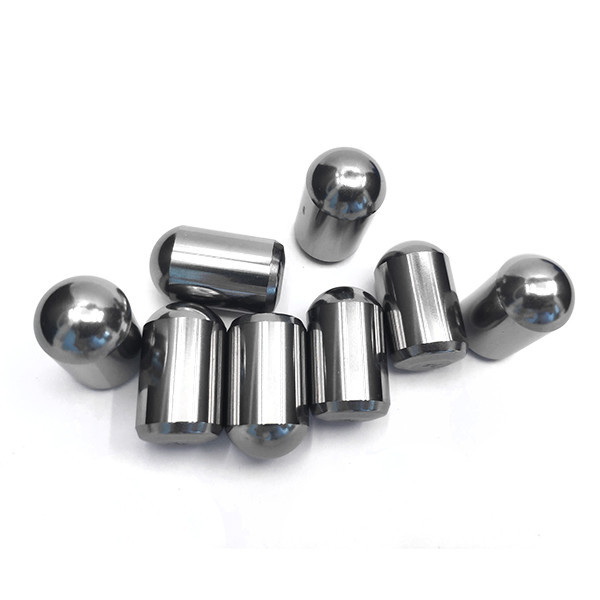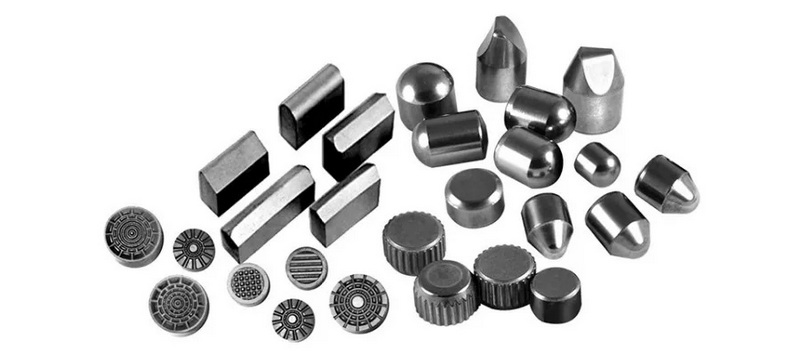Content Menu
● Introduction to Tungsten Carbide
>> Properties of Tungsten Carbide
● Methods for Drilling Tungsten Carbide
>> 1. Traditional Drilling
>> 2. EDM Drilling
>> 3. Laser Drilling
>> 4. Diamond-Coated Hole Saws
● Applications of Tungsten Carbide
● Challenges and Considerations
● Advanced Techniques for Drilling Tungsten Carbide
>> 1. Ultrasonic Machining
>> 2. Water Jet Machining
>> 3. Plasma Arc Machining
● Safety Precautions
● Conclusion
● Frequently Asked Questions
>> 1. What is the best method for drilling through tungsten carbide?
>> 2. Can traditional drill bits be used for tungsten carbide?
>> 3. What are the limitations of laser drilling in tungsten carbide?
>> 4. How does EDM drilling compare to laser drilling in terms of speed?
>> 5. What are the common applications of tungsten carbide?
● Citations:
Tungsten carbide, known as cemented carbide, is a highly durable material used in various industrial applications due to its exceptional hardness and wear resistance. However, its hardness also makes it extremely challenging to drill through. This article will explore the methods and tools used to successfully drill through tungsten carbide, including traditional drilling, EDM (Electrical Discharge Machining), laser drilling, and specialized tools like diamond-coated hole saws.

Introduction to Tungsten Carbide
Tungsten carbide is an alloy composed of tungsten carbide particles bonded together by a metallic matrix, typically cobalt or nickel. Its hardness ranges from 89 to 95 on the Rockwell A scale, making it one of the hardest materials available. This hardness, combined with its high strength and toughness, makes tungsten carbide ideal for applications such as cutting tools, wear parts, and precision components. However, these properties also render it difficult to machine, including drilling.
Properties of Tungsten Carbide
- Hardness: Tungsten carbide is extremely hard, which provides excellent wear resistance but makes it brittle and prone to cracking under stress.
- Thermal Stability: It retains its hardness even at high temperatures, up to 1000°C, making it suitable for high-temperature applications.
- Density: Tungsten carbide is very dense, contributing to its high weight and durability.
Methods for Drilling Tungsten Carbide
Drilling through tungsten carbide requires specialized techniques and tools due to its hardness and brittleness. Here are some common methods:
1. Traditional Drilling
Traditional drilling with a drill bit is generally not recommended for tungsten carbide due to the high risk of bit breakage and damage to the material. However, for larger holes (diameter > 2 mm), specialized carbide drill bits can be used with caution. These bits are designed for drilling hard materials but are not ideal for drilling through tungsten carbide itself.
Tungsten carbide drill bits are designed for drilling hard materials but are not ideal for drilling through tungsten carbide itself.
2. EDM Drilling
Electrical Discharge Machining (EDM) is a non-traditional machining method that uses electrical discharges to remove material. EDM drilling is suitable for creating holes in tungsten carbide with diameters greater than 0.2 mm. It offers high precision and is less likely to cause damage compared to traditional drilling. However, EDM is a slow process and may not be suitable for applications with tight deadlines.
EDM drilling uses electrical discharges to erode material, allowing precise hole creation in hard materials like tungsten carbide.
3. Laser Drilling
Laser drilling is another advanced method for creating holes in tungsten carbide. It offers high precision and speed, capable of drilling holes with diameters as small as 0.01 mm. However, the depth of drilling is limited to about 5 mm. Laser drilling is ideal for applications requiring high accuracy and rapid processing.
Laser drilling uses a focused laser beam to vaporize material, allowing precise and rapid hole creation.
4. Diamond-Coated Hole Saws
For thicker tungsten carbide pieces, diamond-coated hole saws can be effective. These saws are typically used for drilling through very hard materials like porcelain tiles but can also be used for tungsten carbide. They are more aggressive than traditional drill bits and require careful handling to avoid damaging the material.
Diamond-coated hole saws are used for drilling through hard materials and can be effective for tungsten carbide.
Applications of Tungsten Carbide
Tungsten carbide is used in a variety of applications due to its unique properties:
- Cutting Tools: Tungsten carbide is widely used in cutting tools like drill bits, saw blades, and milling cutters due to its hardness and wear resistance.
- Wear Parts: It is used in wear parts such as nozzles, liners, and bushings where high wear resistance is required.
- Precision Components: Tungsten carbide is used in precision bearings and other components where high hardness and dimensional stability are critical.

Challenges and Considerations
Drilling through tungsten carbide poses several challenges:
- Brittleness: Tungsten carbide is prone to cracking under stress, making it crucial to avoid applying excessive force during drilling.
- Tool Wear: The hardness of tungsten carbide causes rapid wear on drill bits and other tools, necessitating frequent tool replacement.
- Cost: Specialized tools and techniques required for drilling tungsten carbide can be expensive.
Advanced Techniques for Drilling Tungsten Carbide
In addition to the methods mentioned above, several advanced techniques are being developed to improve the efficiency and precision of drilling tungsten carbide:
1. Ultrasonic Machining
Ultrasonic machining uses high-frequency vibrations to remove material. It is suitable for drilling small holes and can be used for materials like tungsten carbide, though it may not be as efficient as EDM or laser drilling.
2. Water Jet Machining
Water jet machining uses a high-pressure jet of water to cut through materials. While not typically used for drilling, it can be adapted for cutting or shaping tungsten carbide parts.
3. Plasma Arc Machining
Plasma arc machining uses a plasma arc to melt and remove material. It is less common for drilling tungsten carbide but can be used for cutting or shaping.
Safety Precautions
When drilling through tungsten carbide, safety precautions are crucial:
- Personal Protective Equipment (PPE): Always wear PPE, including gloves, safety glasses, and a dust mask, to protect against debris and dust.
- Machine Maintenance: Regularly maintain drilling machines to ensure they are in good working condition and can handle the stresses of drilling hard materials.
- Work Environment: Ensure the work environment is well-ventilated to prevent inhalation of dust particles.
Conclusion
Drilling through tungsten carbide requires careful selection of methods and tools due to its extreme hardness and brittleness. Traditional drilling is often impractical, while EDM and laser drilling offer higher precision and are more suitable for industrial applications. Diamond-coated hole saws provide an alternative for thicker materials. Understanding the properties and challenges of tungsten carbide is essential for successful machining.

Frequently Asked Questions
1. What is the best method for drilling through tungsten carbide?
The best method depends on the specific application. EDM drilling offers high precision for small holes, while laser drilling provides rapid processing. Diamond-coated hole saws are suitable for thicker materials.
2. Can traditional drill bits be used for tungsten carbide?
Traditional drill bits are generally not recommended due to the high risk of breakage and material damage. Specialized carbide drill bits may be used for larger holes with caution.
3. What are the limitations of laser drilling in tungsten carbide?
Laser drilling is limited by its depth capability, typically up to 5 mm, and may not be suitable for thicker materials.
4. How does EDM drilling compare to laser drilling in terms of speed?
EDM drilling is significantly slower than laser drilling, making it less suitable for applications with tight deadlines.
5. What are the common applications of tungsten carbide?
Tungsten carbide is commonly used in cutting tools, wear parts, precision components, and other applications requiring high hardness and wear resistance.
Citations:
[1] https://www.linkedin.com/pulse/how-get-holes-tungsten-carbide-shijin-lei
[2] https://www.alamy.com/stock-photo/tungsten-carbide.html
[3] https://www.ee.cityu.edu.hk/~gchen/pdf/Writing.pdf
[4] https://www.youtube.com/watch?v=xJIPeNA1Iyw
[5] https://www.alamy.com/stock-photo/tungsten-carbide-tool.html
[6] https://blog.csdn.net/qq_34917728/article/details/125122327
[7] https://huanatools.com/how-to-make-a-great-carbide-drills/
[8] https://www.istockphoto.com/photos/tungsten-carbide-drill-bits
















